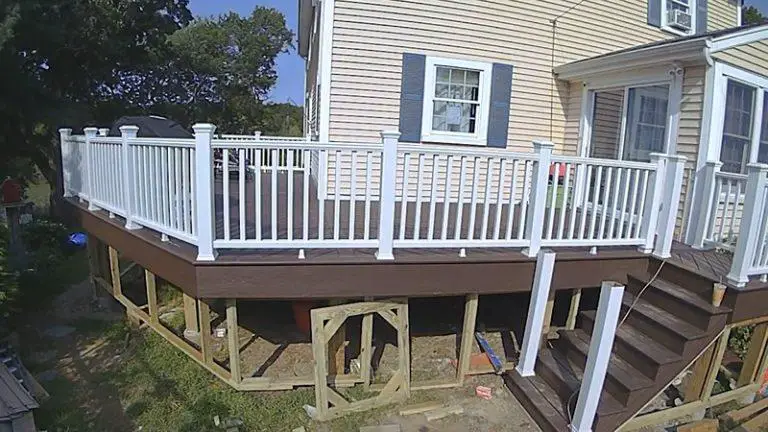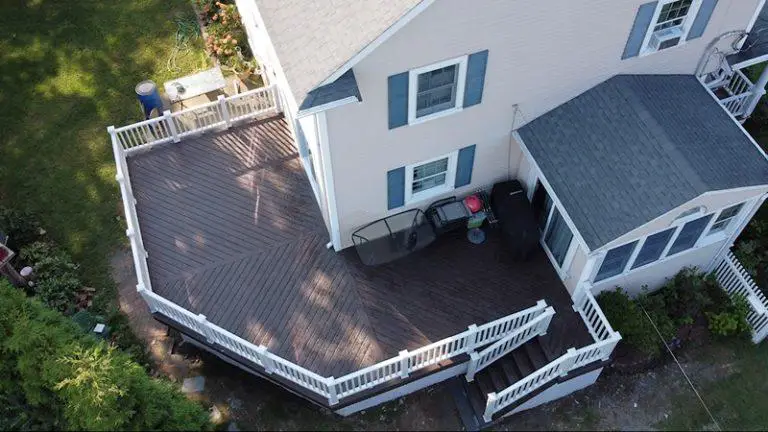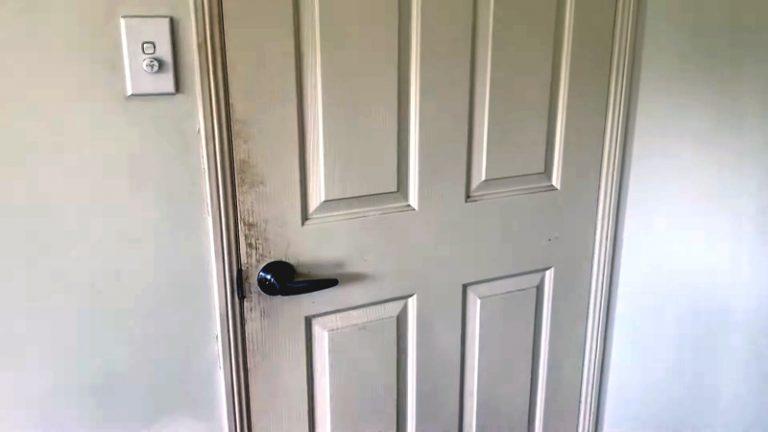Prevent 4×4 Post Bending
4×4 post bending is a crucial technique for anyone interested in DIY home improvement projects, as it involves the manipulation of wooden posts to achieve a desired shape. This process is important for creating various structures such as pergolas, decks, fences, and many others.
Understanding 4×4 post bending will not only allow you to tackle more complex projects with confidence but also provide you with the ability to add a unique touch to your home. The purpose of this blog is to provide a comprehensive guide on 4×4 post bending, including the tools, materials, and step-by-step instructions needed to complete a successful project.
Whether you are a seasoned DIYer or just starting out, this guide will help you bring your creative vision to life.
You'll Learn About
Causes of 4×4 Post Bending
4×4 post bending is a common issue faced by DIY home improvement enthusiasts, especially while constructing decks or fences. In this section, we will discuss the primary causes of 4×4 post bending, which include overloading, inadequate concrete footings, and weak or inadequate connections between posts.
Overloading
Overloading is the most common cause of 4×4 post bending. When a post is unable to support the weight it is subjected to, it begins to bend, causing a noticeable sag. The most common cause of overloading is the installation of a deck or fence that is larger than the post can support.
To avoid overloading, it is important to determine the maximum load the post can support and size the deck or fence accordingly.

Inadequate Concrete Footings
Concrete footings play a crucial role in supporting the post and preventing bending. Inadequate concrete footings can result in 4×4 post bending due to a lack of support. This can occur when the footings are not deep enough, are not placed on solid ground, or are not wide enough to support the post.
To prevent this, it is important to ensure that the concrete footings are properly placed and have adequate depth and width to support the post.
Weak or Inadequate Connections Between Posts
In addition to overloading and inadequate concrete footings, weak or inadequate connections between posts can also result in 4×4 post bending. This can occur when the connections between posts are not strong enough to support the weight of the deck or fence. To prevent this, it is important to use strong and adequate connections between posts, such as metal brackets, bolts, or screws.
4×4 post bending can be prevented by avoiding overloading, ensuring adequate concrete footings, and using strong connections between posts. Understanding the causes of 4×4 post bending can help DIY home improvement enthusiasts avoid this common issue and ensure the stability and longevity of their projects.
Prevention of 4×4 Post Bending
Proper planning and execution of DIY home improvement projects is key to preventing 4×4 post bending. By following a few simple guidelines, homeowners can ensure the longevity and stability of their projects.
Proper Calculation of Load Capacity
The first step in preventing 4×4 post bending is to accurately determine the load capacity of the posts. This is done by considering the weight of the structure, the soil type, and the climate conditions in the area. The load capacity can be calculated using online calculators or by consulting with a structural engineer.
Properly Sizing and Placing Concrete Footings
Once the load capacity has been determined, the next step is to properly size and place the concrete footings. The footings should be deep enough to reach solid soil and wide enough to provide adequate support for the weight of the structure. Additionally, the footings should be placed level and at the same depth to ensure that the posts are straight and stable.
Properly Connecting Posts With Strong Joints
Finally, the posts should be properly connected with strong joints. This can be done by using metal brackets, screws, or by cutting notches into the posts and fitting them together like puzzle pieces. Whichever method is chosen, it is important to ensure that the connection is secure and that the posts are not able to move or twist.
by properly calculating the load capacity, sizing and placing concrete footings, and connecting posts with strong joints, homeowners can prevent 4×4 post bending and ensure the stability and longevity of their DIY home improvement projects. Taking the time to carefully plan and execute these steps will pay off in the long run and prevent costly repairs or even dangerous accidents.
How to Reinforce a Bending 4×4 Post
A bending 4×4 post can be a major problem for a DIY home improvement project, but with proper reinforcement, it can be fixed. Here are three common methods for reinforcing a bending 4×4 post.
Bracing the Post
One of the simplest and most effective ways to reinforce a bending 4×4 post is by bracing it. This involves adding a diagonal support to the post to help transfer the load to the ground. Bracing can be done with a piece of wood, metal, or a combination of both.
For a wooden brace, simply attach a piece of lumber to the post at a 45-degree angle, making sure that the brace is firmly attached to the post and the ground. For a metal brace, use metal brackets that are designed specifically for this purpose.
Strengthening the Connections Between Posts
Another way to reinforce a bending 4×4 post is to strengthen the connections between posts. This can be done by adding additional brackets, metal plates, or by installing new posts that are larger in size.
When installing new posts, make sure to properly calculate the load capacity and size the posts appropriately. This will help ensure that the new posts are strong enough to support the weight of the structure.
Replacing the Post
If the post is too damaged or weakened, the only option may be to replace it completely. This can be done by removing the old post, digging a new hole for the new post, and installing a new post that is the appropriate size and strength for the structure.
When replacing a post, it is important to make sure that the new post is properly connected to the rest of the structure and that it is adequately anchored to the ground. This will help prevent future bending and ensure the stability of the structure.
reinforcing a bending 4×4 post can be a relatively simple process with the right tools and techniques. Whether you choose to brace the post, strengthen the connections between posts, or replace the post, make sure to follow proper guidelines and procedures to ensure the stability and safety of your structure.
Best Practices for Preventing 4×4 Post Bending in the Future
Proper calculation of load capacity: One of the most important steps in preventing 4×4 post bending is calculating the load capacity of the posts before installation. This calculation will help ensure that the posts are not overloaded and can handle the weight of the structure they are supporting.
- To do this, you will need to know the weight of the structure, the size of the posts, and the type of soil in the area. This information will allow you to determine the minimum size of the concrete footings required to support the structure.
- Properly sizing and placing concrete footings: The size and placement of concrete footings play a crucial role in preventing 4×4 post bending. Footings must be large enough to support the weight of the structure and be placed deep enough into the ground to reach a stable soil layer. In addition, the footings should be spaced evenly and should be level to ensure that the structure is supported evenly.
- Properly connecting posts with strong joints: Connections between posts are also critical in preventing 4×4 post bending. Posts should be connected with strong joints, such as metal brackets or strong screws, to ensure that they are securely connected to each other.
This will prevent the posts from separating and bending under heavy loads. When connecting the posts, it is important to ensure that the brackets are spaced evenly and that the screws are tight to prevent any movement.
The best way to prevent 4×4 post bending is to follow these best practices. Proper calculation of load capacity, properly sizing and placing concrete footings, and properly connecting posts with strong joints are all critical steps in preventing bending and ensuring the stability of your structure. By following these best practices, you can be confident that your structure will remain stable and secure for years to come.
Tips for Maintaining Sturdy 4×4 Posts
In addition to the preventative measures and reinforcement techniques discussed in the previous sections, there are several other tips that can help you maintain sturdy 4×4 posts for your DIY home improvement projects. By following these tips, you can ensure the longevity and stability of your structures, and avoid costly repairs down the line.
Use Quality Materials
When purchasing 4×4 posts and other building materials, it is important to invest in high-quality products that meet industry standards. Using low-quality or substandard materials can increase the risk of bending and other structural issues.
Check for Rot and Decay
Over time, 4×4 posts can rot and decay due to exposure to moisture and other environmental factors. Before installing or reinforcing posts, it is important to inspect them for signs of rot and decay, and replace any damaged posts.
Inspect Connections Regularly
Regular inspection of the connections between posts is crucial in maintaining the stability of your structures. Look for signs of looseness, corrosion, or other damage, and make repairs as needed.
Use the Right Fasteners
When connecting posts, it is important to use the right fasteners for the job. Nails are not recommended for post-to-post connections, as they can loosen over time and cause structural issues. Instead, use galvanized lag screws, carriage bolts, or similar fasteners that are designed for structural applications.
Consider Post Brackets
Post brackets are a type of hardware that can be used to reinforce the connection between posts and other structural elements. They come in a variety of sizes and styles, and can be used to provide additional stability and support.
By following these tips, you can help ensure that your 4×4 posts remain sturdy and secure for years to come. Remember, investing in high-quality materials, regularly inspecting and maintaining your structures, and seeking professional help when necessary, can go a long way in ensuring the safety and longevity of your DIY home improvement projects.
Editor’s Note
Bracing the posts from the inside, as suggested by huesmann, is a good option to reinforce the posts and make them stronger. You can add diagonal braces, such as metal brackets or sleeves, to the inside of the posts to prevent them from bending.
If you are not comfortable doing this yourself, I would recommend consulting a professional for help in reinforcing the posts. It is important to ensure the safety of anyone using the obstacle course, and making sure the posts are secure and able to handle the weight and force of the course is critical.
Frequently Asked Questions
Q1: What is the Load Capacity of a 4×4 Post?
A: The load capacity of a 4×4 post depends on several factors such as the type of wood, the length of the post, and the location. Generally, a 4×4 post made of pressure-treated pine has a load capacity of around 1000 pounds. However, this can vary based on the factors mentioned above and it’s always best to consult an engineer or do proper calculations to determine the specific load capacity of your 4×4 post.
Q2: What Are the Most Common Causes of 4×4 Post Bending?
A: The most common causes of 4×4 post bending are overloading, inadequate concrete footings, and weak or inadequate connections between posts. Overloading occurs when the weight applied to the post exceeds its load capacity.
Inadequate concrete footings can result in insufficient support for the post, leading to bending. Weak or inadequate connections between posts can also cause bending if the posts are not properly secured together.
Q3: How Can I Tell if My 4×4 Post is Bending?
A: There are several signs that can indicate that a 4×4 post is bending. The most obvious sign is a visible bend in the post. Other signs include cracking or splitting of the wood, nails or screws that are popping out of the post, and doors or windows that are difficult to open or close.
If you suspect that your 4×4 post is bending, it’s important to address the issue as soon as possible to prevent further damage.
Q4: What is the Best Way to Reinforce a Bending 4×4 Post?
A: The best way to reinforce a bending 4×4 post depends on the cause of the bending. If the post is bending due to overloading, bracing the post can help to transfer the weight to adjacent posts. If the post is bending due to weak connections between posts, strengthening the connections can help to prevent further bending.
If the post is beyond repair, replacing the post may be necessary.
Q5: Can a 4×4 Post Be Straightened After It Has Bent?
A: It is possible to straighten a 4×4 post after it has bent, but it can be a challenging and time-consuming process. The first step is to remove any weight from the post and then use a jack to gradually apply pressure to the post until it is straightened.
This process should be done carefully and gradually to avoid causing further damage to the post or structure. In many cases, it may be easier and safer to simply replace the bending post.
understanding 4×4 post bending and how to prevent it is an important aspect of DIY home improvement projects. Proper calculation of load capacity, properly sizing and placing concrete footings, and properly connecting posts with strong joints are all critical steps in preventing 4×4 post bending. If a post does bend, reinforcing it or replacing it can help to prevent further damage to the structure.
Conclusion
understanding 4×4 post bending is crucial for any DIY home improvement project. Proper calculation of load capacity, properly sizing and placing concrete footings, and using strong connections between posts are essential to prevent bending and ensure the safety of structures.
By following these best practices and taking action to reinforce bending posts, homeowners can ensure the stability and longevity of their structures. It is important to remember that taking the necessary steps to prevent and address 4×4 post bending can not only improve the safety of your home, but it can also prevent costly repairs in the future.
Bending 4×4 posts can compromise the integrity of your deck or structure. To prevent this, ensure proper installation, use high-quality materials, and consider reinforcing the posts with additional supports. Regular maintenance and inspections can also help catch issues early.
While strengthening your 4×4 posts, explore other home improvement projects. For instance, learning how to strengthen a 4×4 deck post can provide additional stability. Additionally, understanding Bosch 4100 table saw problems can help you tackle woodworking projects with confidence.






